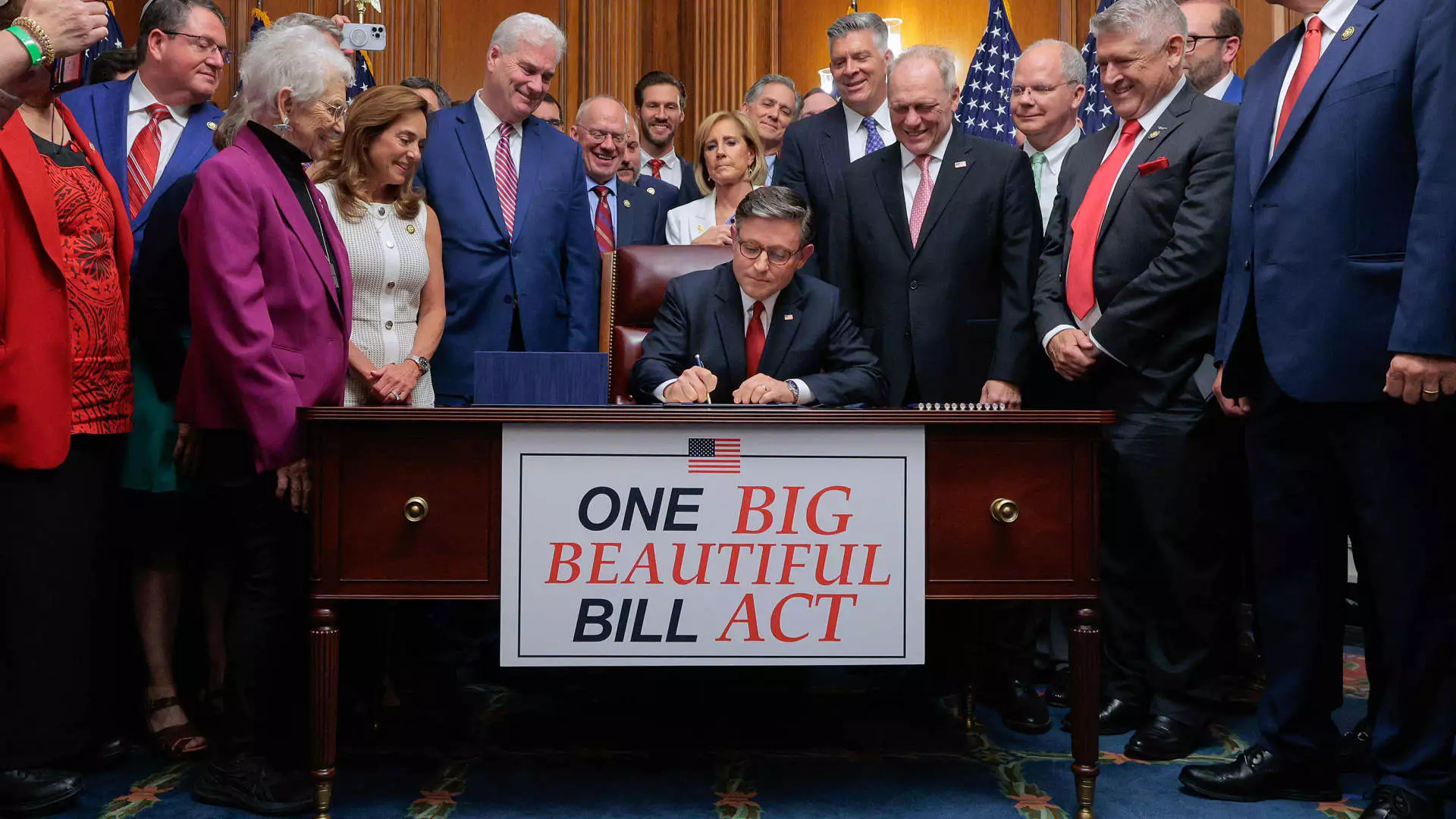In the aftermath of President Trump’s newly enacted “big beautiful bill,” a wave of optimism has swept through political and economic spheres. Mainstream narratives herald this legislation as a boon for working families, promising lower taxes and increased disposable income. However, beneath this shiny veneer lies a complex web of policy shifts that threaten to prioritize the wealthy and diminish opportunities for middle-class Americans. The false sense of security propagated by this legislation might ultimately lead to a disconnect between perception and reality, fostering a growing sense of disillusionment among those it purportedly aims to help.
This legislation, while enamored with headlines about tax cuts and increased deductions, is riddled with caveats that undermine its purported benefits. For ordinary taxpayers, especially middle-income families, the actual savings can be minimal or even illusory, depending on individual circumstances and strategic planning. The introduction of temporary measures, like the increased standard deduction and child benefits, create a fleeting sense of progress that may evaporate when the nuances are fully understood, revealing a system that favors the affluent and leaves the middle behind. The widespread narrative of “tax relief” conveniently ignores the creeping complexity that can trap ordinary people in a cycle of uncertainty and misinformation.
The Hidden Trap of the SALT Deduction and Its Central Role in Inequality
One of the most alarming aspects of this legislation is its treatment of the SALT (state and local tax) deduction, which is being portrayed as a tax benefit. Yet, the reality is more insidious. The law raises the SALT cap to $40,000 for 2025—a modest increase compared to the previous limit of $10,000—seemingly a victory for taxpayers. However, this benefit is actually a carefully crafted “sweet spot” that primarily benefits high-income earners with substantial property taxes and state levies.
More troubling is the so-called “SALT torpedo,” a term that captures the unintended, yet predictable, consequence of this policy: a dramatic increase in the effective tax rate for high earners earning between $500,000 and $600,000. During this phase, the benefit phases out, leaving many households vulnerable to a tax rate that spikes dramatically—up to 45.5%. This creates a paradox: those earning just under a million dollars might face a higher tax burden than those earning significantly more. Such a provision essentially acts as a triangular trap, funneling wealth upward while penalizing middle and upper-middle-class homeowners who rely heavily on SALT deductions.
This scenario underscores a broader, more troubling trend: policies designed as benefits for the wealthy are cloaked as middle-class support. The law’s focus on dollar caps and phased-out benefits ensures that the class divide widens, with the middle class bearing the brunt of tax hikes disguised behind “ generosity” toward high earners. It is an unsettling reflection of how tax policy can be manipulated to sustain inequality rather than bridge gaps.
Temporary Fixes or Long-Term Consequences? A Fragile Foundation
The legislation’s inclusion of temporary deductions and credits, such as the $6,000 bonus for seniors over 65 and new reimbursements for less common expenses like tip income and car loan interest, appears as generous gestures. But these measures are fleeting; they serve as band-aids on a system that is fundamentally skewed. When the clock runs out—or if future budgets do not extend these provisions—millions will face higher costs or the loss of benefits entirely.
Most concerning is the expiration of pandemic-era health subsidies, which made health care more affordable for millions. The legislation’s failure to extend the increased premium tax credits exposes vulnerable populations to significant financial strain, risking a return to unaffordable health insurance plans. The so-called “ACA subsidy cliff,” which could strip benefits from families with modest income increases, exemplifies how temporary measures fail to address the fundamental structural issues within health policy. Instead of building resilient safety nets, the legislation jeopardizes the progress made during the pandemic, exposing the fragile foundation of America’s health security.
This focus on short-term gains and temporary perks promotes a false narrative: that the economy is thriving, and that everyone shares in this prosperity. Yet, the reality suggests a different story. A system that relies on intermittent handouts rather than sustainable, equitable policies inevitably perpetuates inequality and disenfranchisement. It’s a house built on shifting sands, with middle-class Americans footing the bill for tax cuts that largely benefit the elite.
The Disparity of Policy and the Erosion of Social Trust
Ultimately, this legislation underscores a troubling tendency among policymakers: the prioritization of political convenience over genuine economic fairness. The bill’s complex provisions and phased-in benefits create a fog of confusion, deliberately obscuring who truly benefits. It risks eroding public trust in the electoral and legislative process, fostering a sense that the system is rigged to favor the wealthy and powerful.
From a center-liberal perspective, this is an inflection point—a moment to critically re-examine what it means to pursue equitable growth. The veneer of prosperity created by tax cuts and superficial benefits masks the underlying reality: ongoing disparities continually widen, social mobility becomes harder, and the promise of shared prosperity appears increasingly hollow. If policymakers continue down this path, they risk deepening an entrenched class divide and undermining the social fabric that underpins democratic institutions.
The “big beautiful bill,” rather than being a catalyst for widespread economic uplift, may serve as a cautionary tale—a reminder that true fiscal responsibility lies not in superficial fixes, but in crafting policies that promote fairness, transparency, and long-term sustainability. Without a critical shift towards policies that prioritize equality and social cohesion, the promise of “working family tax cuts” risks becoming a hollow, short-lived illusion.

